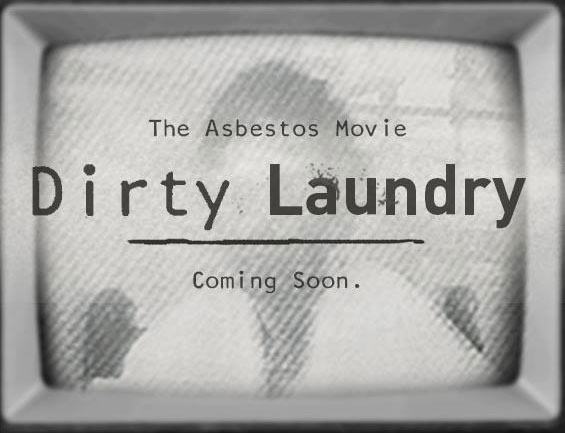Dirty Laundry: New Documentary Unravels Asbestos, Mesothelioma
Asbestos Exposure & BansWritten by Matt Mauney • Edited By Walter Pacheco
Asbestos.com is the nation’s most trusted mesothelioma resource
The Mesothelioma Center at Asbestos.com has provided patients and their loved ones the most updated and reliable information on mesothelioma and asbestos exposure since 2006.
Our team of Patient Advocates includes a medical doctor, a registered nurse, health services administrators, veterans, VA-accredited Claims Agents, an oncology patient navigator and hospice care expert. Their combined expertise means we help any mesothelioma patient or loved one through every step of their cancer journey.
More than 30 contributors, including mesothelioma doctors, survivors, health care professionals and other experts, have peer-reviewed our website and written unique research-driven articles to ensure you get the highest-quality medical and health information.
About The Mesothelioma Center at Asbestos.com
- Assisting mesothelioma patients and their loved ones since 2006.
- Helps more than 50% of mesothelioma patients diagnosed annually in the U.S.
- A+ rating from the Better Business Bureau.
- 5-star reviewed mesothelioma and support organization.
Testimonials
My family has only the highest compliment for the assistance and support that we received from The Mesothelioma Center. This is a staff of compassionate and knowledgeable individuals who respect what your family is experiencing and who go the extra mile to make an unfortunate diagnosis less stressful. Information and assistance were provided by The Mesothelioma Center at no cost to our family.LashawnMesothelioma patient’s daughter
How to Cite Asbestos.com’s Article
APA
Mauney, M. (2021, March 10). Dirty Laundry: New Documentary Unravels Asbestos, Mesothelioma. Asbestos.com. Retrieved April 27, 2024, from https://www.asbestos.com/news/2018/03/15/dirty-laundry-mesothelioma-documentary/
MLA
Mauney, Matt. "Dirty Laundry: New Documentary Unravels Asbestos, Mesothelioma." Asbestos.com, 10 Mar 2021, https://www.asbestos.com/news/2018/03/15/dirty-laundry-mesothelioma-documentary/.
Chicago
Mauney, Matt. "Dirty Laundry: New Documentary Unravels Asbestos, Mesothelioma." Asbestos.com. Last modified March 10, 2021. https://www.asbestos.com/news/2018/03/15/dirty-laundry-mesothelioma-documentary/.

In the new 75-minute documentary “Dirty Laundry,” filmmakers and cousins Conor B. Lewis and Zack Johnson embark on a 4,200-mile cycling journey from Astoria, Oregon, to New York City.
The reason: To better understand mesothelioma, the asbestos-related cancer that took the life of their grandmother, Iva Lewis.
“Dirty Laundry” tells Iva’s story through a series of interviews with family members, doctors and researchers.
On the 78-day bike ride, the cousins make stops in Libby, Montana, and Ambler, Pennsylvania — two of the most notorious EPA Superfund sites for asbestos cleanup. Conor and Johnson also stop in their grandmother’s hometown of Roxana, Illinois.
Originally beginning as a personal tale of Iva’s life and sudden death, it turned into an in-depth documentary about asbestos exposure and mesothelioma.
“We learned that there’s this network of people in the mesothelioma community that all seem to know each other,” producer Bryan Lemon told Asbestos.com. “Conor and Zack were able to get in touch with a lot of other people that have been affected by this cancer and get a better picture of what this disease is.”
Lemon, a college friend of Conor, didn’t join the cousins for the cycling trip. But he talked to them nearly every day and later combed through hours upon hours of footage.
As someone with very little prior knowledge of the asbestos-related cancer, the editing process was an eye-opening experience for Lemon.
“We’ve been really humbled by everyone we spoke with for this project and were driven by their excitement, honesty and openness,” Lemon said. “We had terabytes of interviews, and I wish we could include it all.”
“Dirty Laundry” will premiere Thursday at the San Luis Obispo International Film Festival in California, with additional showings Friday and Saturday. The film has also been accepted into the Kansas City Film Festival in April.
Telling Iva’s Story
Iva Lewis was diagnosed with pleural mesothelioma on July 18, 2012. She died a few months later.
In 2016, Conor and Johnson decided to devote the next two years to creating a film that honored their grandmother and chronicled how she was exposed to asbestos.
Iva’s husband worked as a pipe insulator for Shell Oil Refinery in Roxana for more than 30 years. Iva would wash his dirty work clothes, which were often covered in asbestos dust.
The documentary’s title carries a double meaning, as it also speaks to the corporate greed and negligence that led to Iva’s asbestos exposure and the exposure of so many others.
The project started as a 50-50 mix: Part bike ride adventure across America and part about asbestos and mesothelioma, which would focus on Iva.
“Throughout the 78 days, the most interesting part wasn’t that [Conor and Johnson] rode their bike across the country, but that they met so many people affected by asbestos exposure along the way,” Lemon said. “I remember one night on the phone where Conor was barely able to express how he was able to talk to some of these people, realizing the pain that asbestos has caused them.”
An estimated 12,000-15,000 Americans die each year from asbestos-related diseases, according to the Environmental Working Group Action Fund. And while asbestos is more regulated than it was decades ago, use of the carcinogen remains legal in the U.S.
Breaking the Cultural Stereotypes of Mesothelioma
Everyone involved with the project had a similar view of asbestos and mesothelioma before filming began.
“My understanding of what this cancer is was limited to late-night TV infomercials,” Lemon said. “That’s the only cultural context I had.”
Together, Lemon and the cousins were able to shed light on the dangers of asbestos exposure and tell the heartbreaking stories of those affected — something Lemon believes has never been done in a full-length feature documentary.
“The most difficult part for me was internalizing all that stuff and using it as momentum to keep moving forward,” he said.
Asbestos is often used as a punch line in popular culture, as made evident with the recent Snickers ad that ran in the 2018 Sports Illustrated Swimsuit edition.
Lemon and the other filmmakers hope their movie can be used as a talking point to show that asbestos exposure is a real issue and mesothelioma is a real disease that affects thousands of people.
“My hope is that we can laugh at a joke like Snickers and Sports Illustrated made, but understand by laughing at that joke we’re missing out on what exactly that joke means,” Lemon said. “That’s the connotation we have in our culture and a great example of where our culture is today. I hope we can put a face to the name instead of a silly ad on the back of [Sports Illustrated].”







